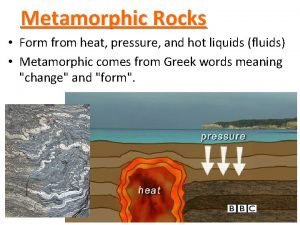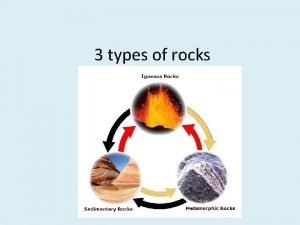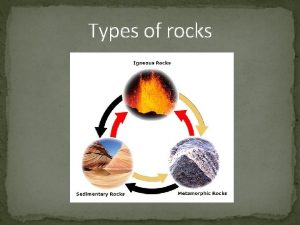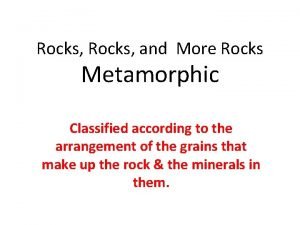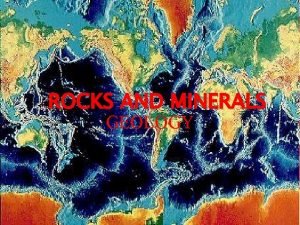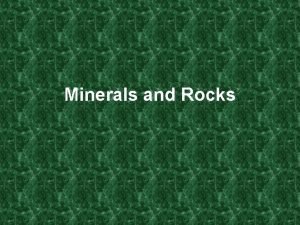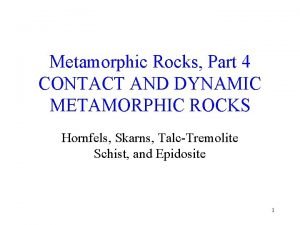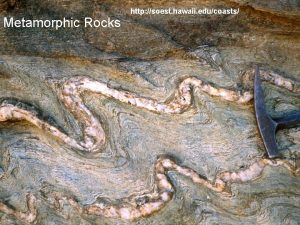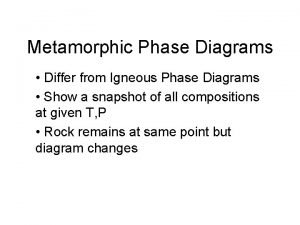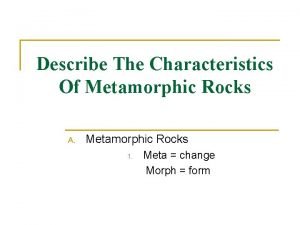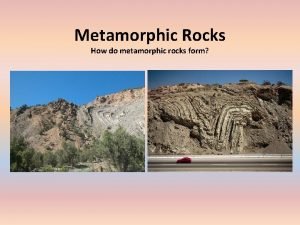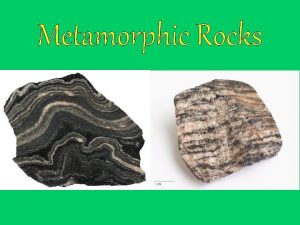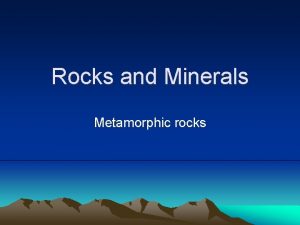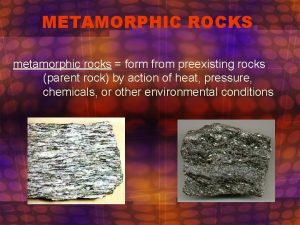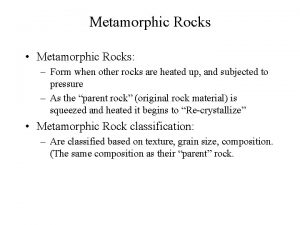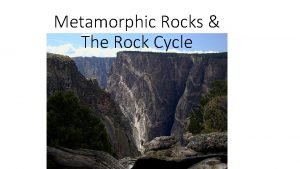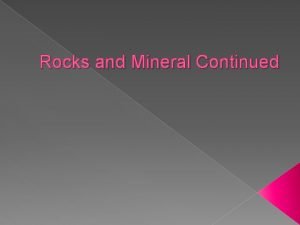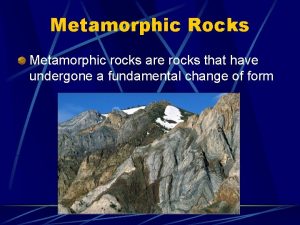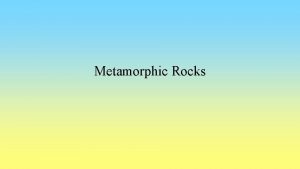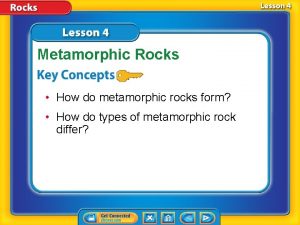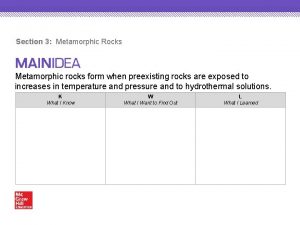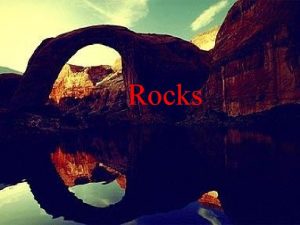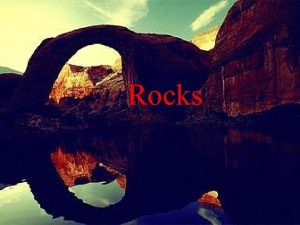Metamorphic Rocks Form from heat pressure and hot



















- Slides: 19

Metamorphic Rocks • Form from heat, pressure, and hot liquids (fluids) • Metamorphic comes from Greek words meaning "change" and "form".

Metamorphic Rocks • Form 12 -16 kilometers beneath Earth • Changes at temperatures of 100°C - 800°C • If you squeeze and heat a rock for a few million years, it can turn into a new kind of rock. Metamorphic Rock

Where does the heat come from? 1. Leftover heat from the formation 2. Radioactive Decay – radioactive elements like uranium decay and release heat Earth produces almost as much heat as it’s losing!

Where does the pressure come from? • Layers of rock piled on top of layers and layers of rock. • The layers on the bottom get squeezed. • The thicker the layers, the more pressure there is.





Can form in 2 ways: 1. Contact Metamorphism • Rocks changes when in close contact to magma chambers • Hot fluids (water, carbon dioxide) can dissolve some elements in rock and change the composition ! t l e M t o N s e Do Just in close contact with Magma!

Deep underground, zones of metamorphism form around the hot magma of batholiths.

2. Regional Metamorphism • Pieces of the lithosphere crash into each other • Rocks get squished and change deep within mountain ranges • Pieces of crust can also be pulled below another and altered by high pressure and temperature Rocks d e s o h p r o m a t me s a e r a e g r a l r e v o f o e z i s e h t e r a that n e v e r o s e t a t many s ! s e i r t n u o c l a r seve

How could this happen? What force has the power to change all those rocks?

Common Metamorphic Rocks Classification Foliated (Banded) Non-Foliated (Not Banded) Metamorphic Rock Parent Rock Common Minerals Slate Shale, mudstone Quartz, clay minerals (feldspars) Schist Shale, slate, basalt, or granite Mica, chlorite, talc, quartz Gneiss Shale, schist, granite, sandstone, and other rock types Quartz, feldspars Quartzite Sandstone Quartz Marble Limestone, dolomite Calcite Anthracite coal Bituminous coal Crystalline carbon

Slate formed from shale

Schist formed from shale, slate, basalt, or granite

Quartzite formed from sandstone

• Classified according to composition & texture • Foliated texture - mineral grains line up in parallel layers to exhibit banding or layering (ex. slate & gneiss) • Non-foliated texture - mineral grains grow and rearrange but do not form layers (ex. quartzite) gneiss Slate quartz

• Foliated or Banded Rock – minerals are lined up parallel to the surface; can appear striped • Flattened minerals • Folded Layers • Sparkly, shiny thin layers • Looks like it is one solid color (homogenous)

 Types of igneous sedimentary and metamorphic rocks
Types of igneous sedimentary and metamorphic rocks Igneous rocks metamorphic rocks and sedimentary rocks
Igneous rocks metamorphic rocks and sedimentary rocks Regional metamorphism
Regional metamorphism What is cleavage in rocks
What is cleavage in rocks Classification of rocks
Classification of rocks Chapter 6 sedimentary and metamorphic rocks answer key
Chapter 6 sedimentary and metamorphic rocks answer key Minerals and rocks concept map
Minerals and rocks concept map Meta - change morph
Meta - change morph Metamorphic rocks with a layered or banded look are called
Metamorphic rocks with a layered or banded look are called Clastic vs non clastic
Clastic vs non clastic Metamorphic rocks characteristics
Metamorphic rocks characteristics Activeartto
Activeartto Characteristics of metamorphic rocks
Characteristics of metamorphic rocks Organic sedimentary rocks
Organic sedimentary rocks Pyroxene hornfels
Pyroxene hornfels Metamorphic grade
Metamorphic grade Metamorphic rocks in hawaii
Metamorphic rocks in hawaii Metamorphic rock phase diagram
Metamorphic rock phase diagram Formation of metamorphic rocks
Formation of metamorphic rocks Rocks
Rocks


